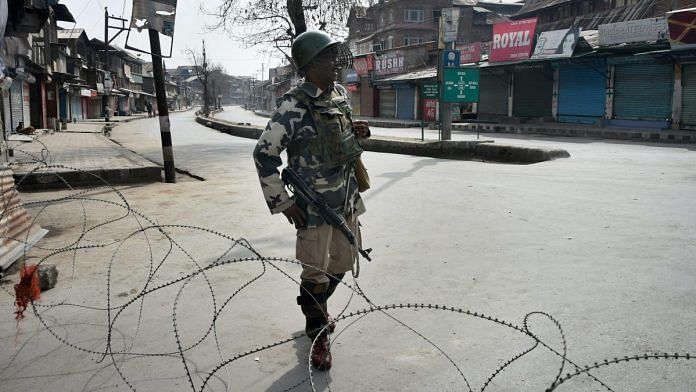New Delhi: Stung by a suicide car bomb attack on its convoy that killed 40 personnel, the Central Reserve Police Force (CRPF) is working on new Standard Operating Procedures (SOPs) for its troops in Kashmir that will include better coordination with the Army and expansion of anti-IED capabilities.
Speaking to ThePrint days after the 14 February attack, CRPF director general R.R. Bhatnagar said that since it is a new kind of threat, which the security forces have hitherto not encountered, they are changing their standard operating procedures.
“This is a new kind of threat that has emerged — suicide car bomber. Therefore, now we are working on how to minimise the risk from this kind of threat,” said Bhatnagar.
“So we are changing our standard operating procedures — also in conjunction with the other stakeholders, the Army and the local police. We are coming up with a new strategy to counter this,” he said.
Also read: Don’t politicise Pulwama attack, Modi & Shah say but won’t stop themselves
‘Control threat’
Elaborating on the changes under consideration, Bhatnagar said, “First, in view of this threat, we would see how we can control the threat from a moving vehicle.”
While the CRPF has been tackling with the issue of IEDs for some time now, they have been used in conventional ways so far. “Since it is a new threat, the methods that we were using — of sanitising the road, the shoulders of the road — the conventional ways of checking for IEDs are not effective,” he said.
“We are training not only our own bomb disposal and detection squad, but also that of the J&K police. We are also increasing the number of trained personnel, also equipping them appropriately,” he said in relation to enhancing anti-IED capabilities.
Moreover, since there is no traffic restriction on private vehicles while the convoy is on the go, it becomes difficult to detect the vehicle carrying explosives. However, in light of this attack, the local administration may introduce traffic restrictions in phases.
“We may restrict traffic in phases while the convoy moves so that we do not face traffic en route, and also so that the public is not inconvenienced for a long time,” said the CRPF DG.
“We are trying to develop our methodologies so that we are able to achieve our objectives without blocking the traffic for a long time.”
Also read: 4 soldiers killed in encounter with Jaish terrorists in Pulwama
‘Convoy is very visible thing’
In addition, Bhatnagar said the CRPF is looking at ways to enhance synergy with all the forces, including the Army, which are operating in that region.
Ruling out an intelligence leak as the cause behind the attack, the CRPF DG said no specific information is required by terrorist groups to attack a moving convoy.
“A convoy is a very visible thing — it can be seen by anybody and everybody. Convoys are a regular feature, and they know that convoys will ply almost everyday. It is not as though they happen once in a blue moon, so you need to have information. The convoy movement is almost a daily affair,” he said.
Moreover, he argued that the assertion that the movement of a convoy as large as this one was aberrational is unfounded. “The length of the convoy is not such an issue. During the winter and the monsoon months, the convoys are very large,” said Bhatnagar.
“This time also, the convoy was being run after a gap of 10 days, and the fifth vehicle from the front was hit,” he said, explaining that the length of the convoy in no way determined the magnitude of the attack.
Further ruling out speculation in the media that the CRPF was denied the alternative of airlifting the jawans, Bhatnagar said, “As far as the airlift is concerned, airlift can only supplement. It cannot replace the convoys. The convoys would always be there.”
Speaking of the threat emanating from local militancy in the Valley, he said that “a terrorist was a threat irrespective of where he is coming from”.
Yet, local recruitment, although a concern, has come down “significantly” in the last few months, he said.



